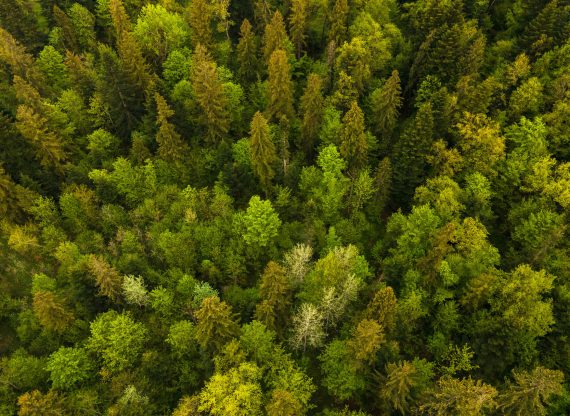Can we still trust media reports on environmental issues?

Op-ed featured exclusively on our website.
Can we still trust the Canadian media to properly report facts when it comes to controversial environmental issues? We cannot generalize for all media outlets and journalists of course, but recent coverage of the impact of the forestry sector on climate change raises a series of alarming questions as to the objectivity and reliability of some prominent ones.
On October 18, 2022, the Canadian Press published an article, reprinted by the CBC, that uncritically repeated the findings of a report by the Natural Resources Defense Council (NRDC) and Nature Canada. The NGOs claimed that Canada misreports the forestry sector’s contributions to climate change “as a way of masking emissions.”
The Toronto Star published a similar news report two weeks later signed by one of their reporters. Apart from a very brief and general rebuttal by a logging industry group, the whole story focused on the NRDC claims—and almost half of the text was quotes from environmental activists.
Shouldn’t someone covering their reports look for alternative views instead of taking everything at face value when a deep-pocketed U.S.-based NGO puts out a report aimed at influencing Canadian domestic policy in one of our key industries? Unfortunately, instead of accurately reporting the facts about Canadian forestry, these articles merely rehashed the talking points from NRDC’s press release.
Let’s examine some of the claims in the Canadian Press article. The article begins by saying that the NRDC report “uses federal data and methodology to attempt to find out how much carbon is emitted by Canada’s forestry sector.”
NRDC actually concocted this novel methodology to reach a predetermined conclusion. Natural Resources Canada (NRCan) uses internationally accepted guidelines to estimate forest emissions and removals, which experts have utilized for 30 years. Unlike NRDC’s approach, Canada’s greenhouse gas (GHG) inventory methodologies are grounded in extensive peer-reviewed research.
The NGO claims that the government’s calculations are “skewed.” And that, the article goes on to explain, is because “Environment Canada reports direct emissions for almost all sectors of the economy. But logging is handled through a figure called ‘combined net flux,’ combining natural processes and industrial activity.”
If the journalist had done a proper research, he could however have told the reader that harvesting timber is just a small aspect of overall land use management in Canada’s forests. Only 0.21 percent of the Canadian forest is harvested annually. By comparison, 4 percent of forests are impacted by insects each year, and another 0.06 percent by fires. More importantly, 100 percent of harvested areas are regenerated either through tree planting or naturally, as required by Canadian law.
This is why measuring overall emissions for the entire managed forest provides a much more instructive method for understanding the forests’ climate impact.
Indeed, as NRCan notes, this is because “The annual GHG emissions and removals for any large, forested area cannot be measured directly.” In order to produce reasonable estimates, scientists have to assess emissions from human activities alongside emissions from natural disturbances.
On the basis of these false claims by NRDC, the Canadian Press article implies that Canada’s forestry emissions reporting is somehow out of step with mainstream scientific standards. “The government doesn’t attribute carbon released by wildfires to industry,” the journalist writes. “However, it does credit industry for carbon absorbed by forest regrowth, even if that forest has never been harvested and human activities play no part in its recovery.”
Nothing could be further from the truth, as even preliminary research would have confirmed. Emissions from wildfires and removals resulting from regrowth are counted in a “natural disturbance” category. After 70 to 100 years, the age range of commercial maturity, these forests are returned to the anthropogenic reporting category. This methodology helps regulators develop a clear understanding of direct human impacts on forests, NRCan explains, and informs their efforts to increase the carbon sequestered by forests.
Once again, since only 0.21 percent of Canadian forests are harvested annually, it’s absurd to report emissions from recently harvested areas and ignore removals from the rest of the managed forests; these include areas that were harvested in years past and are now regrowing and absorbing more CO2.
Instead of taking NRDC’s claims at face value, the Canadian Press could have contacted an independent scientist and reported these vitally important facts to its readers.
The NRDC also claims the government is undercounting deforestation and associated carbon emissions due to the impact of “logging scars,” or areas where no regrowth has occurred due to the lingering effects of logging roads and other activities that were more common three decades ago. But these forestry practices are now outdated, and current practices have a drastically smaller footprint.
Canada has long been recognized globally for its sustainable forest management practices and currently holds 35 percent of the world’s certified forest area. Moreover, independent research shows that Canada is now regaining forests.
All these facts could have been mentioned as a counterweight to the NRDC’s false claims if the journalist had tried to “be impartial when handling any news affecting parties or matters in controversy” and to “give fair representation to all sides at issue,” as the Canadian Press states in its Principles. That’s not what he did here, and the story is littered with critical mistakes that could have been countered by just a little research.
The NRDC is obviously trying to blacken the reputation of an enormous sector of the Canadian economy for ideological reasons. Their narrative is clear enough: forestry is harmful and should be curtailed. They reject any data that doesn’t fit it.
They are free to hold these opinions of course, and try to disseminate them. But a serious journalistic outlet should be doubly careful and make sure to seek expert counter opinion before reporting findings as facts, especially when covering such technical and complex topics.
Michel Kelly-Gagnon is President and CEO of the MEI. The views reflected in this opinion piece are his own.

